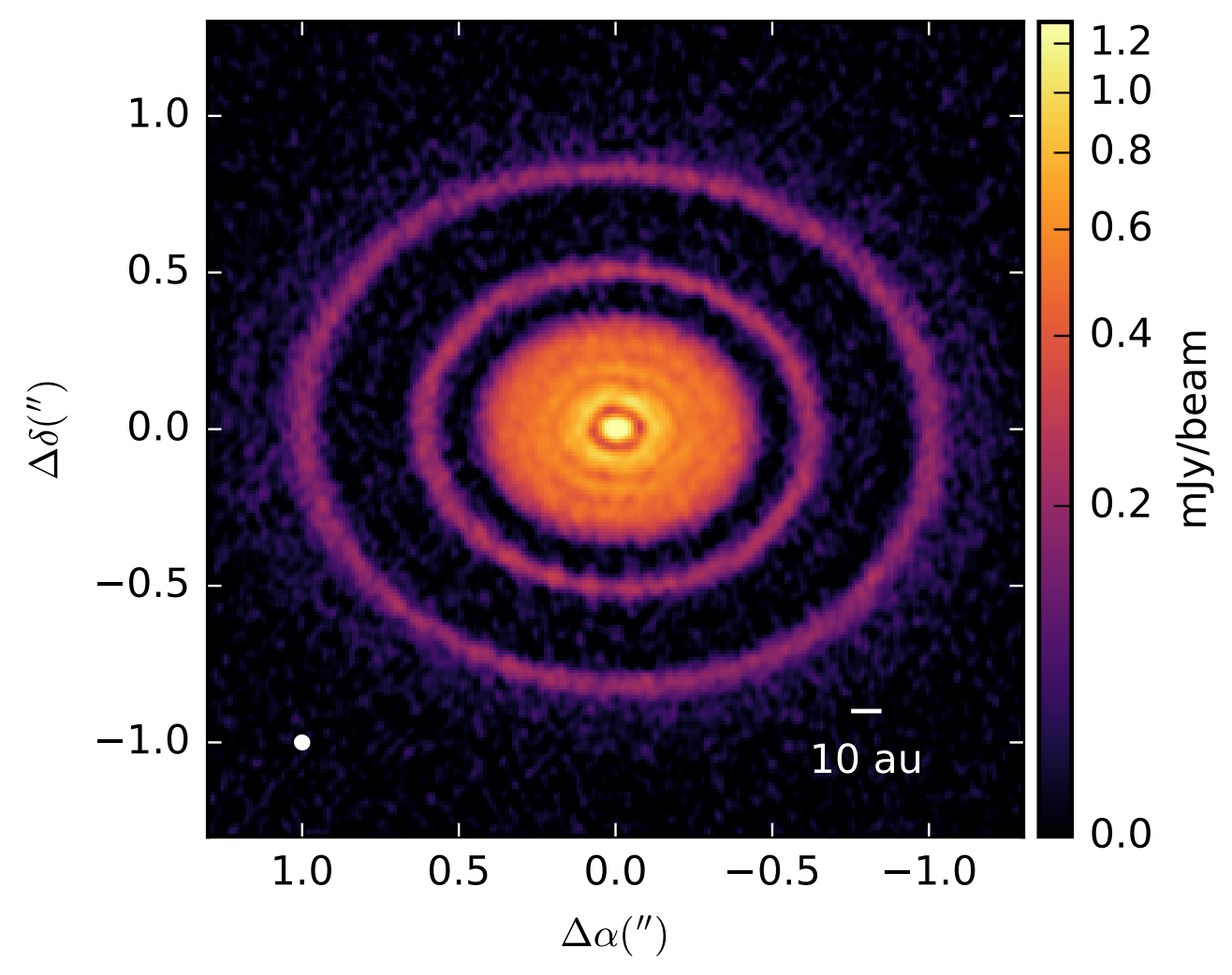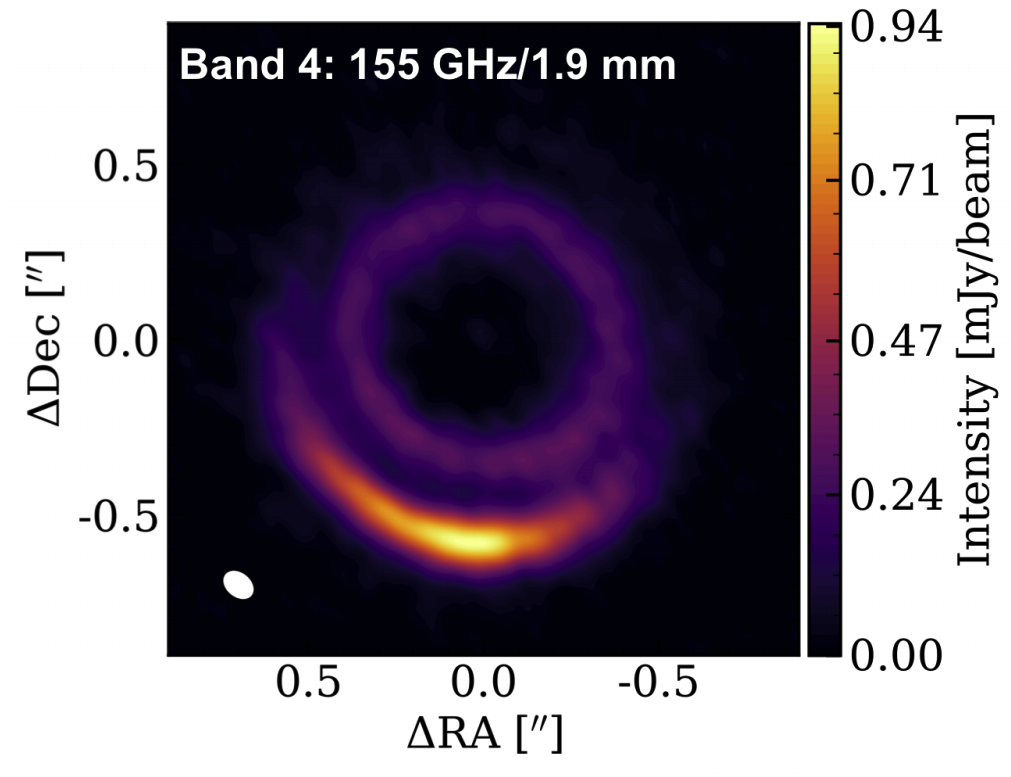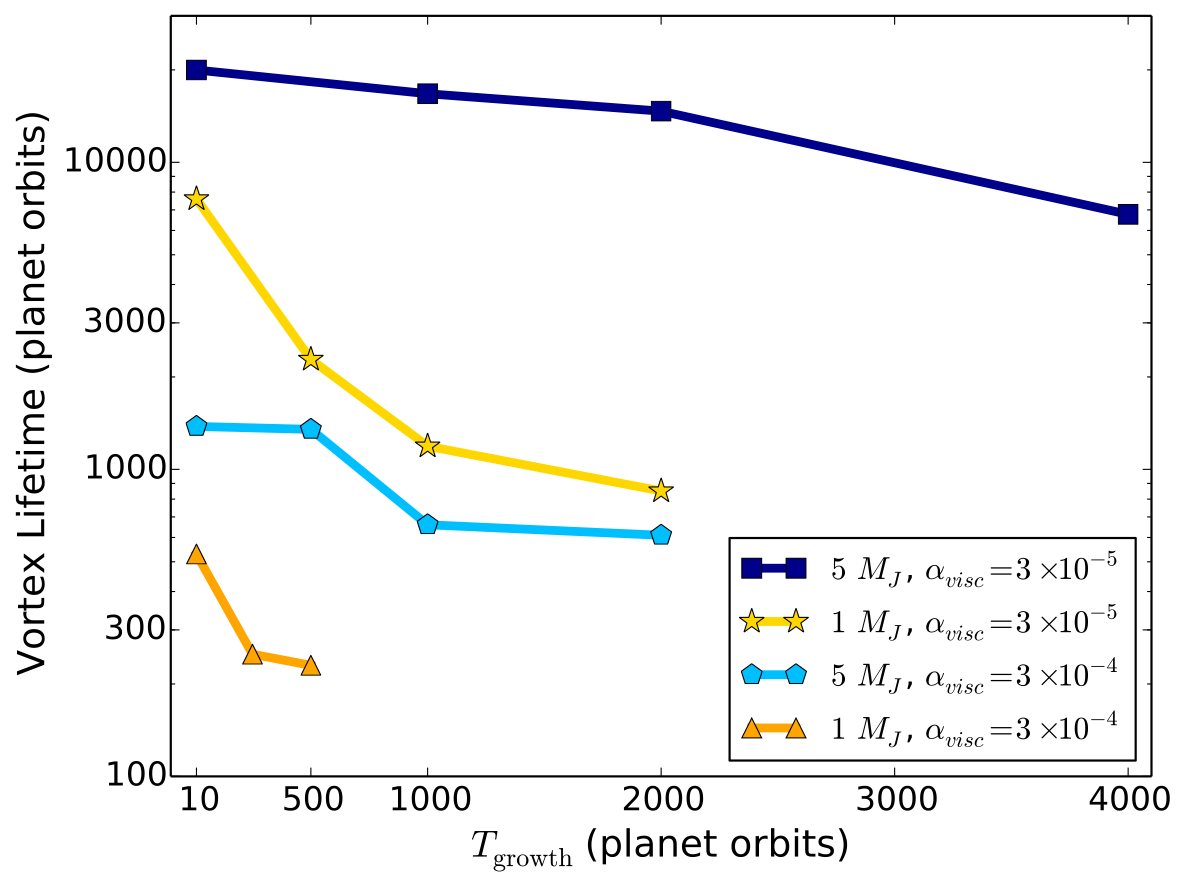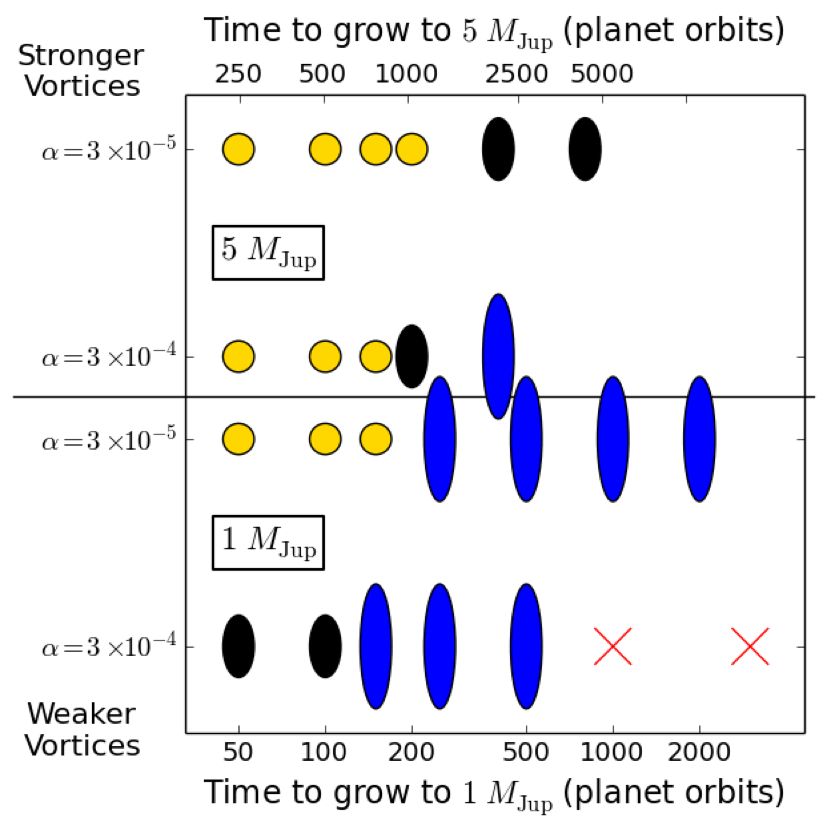Research Table of Contents
- Paper 1 (04/2017): Making simulations of planet-induced vortices more realistic.
- Paper 2 (01/2019): Connecting these simulations of planet-induced vortices to observations.
- Paper 3 (07/2021): Exploring how to extend vortex lifetimes even with realistic planet growth.
- Paper 4 (10/2023): Forming compact and other vortices that survive indefinitely.
- For the public.
Making simulations of planet-induced vortices more realistic.
MNRAS paper (04/2017): Slowly-growing gap-opening planets trigger weaker vortices
ERES Conference presentation: ERES.pptx, PDF Version, (Conference website here)
Steward Internal Symposium presentation: Internal_Symposium.pptx, PDF Version
The Atacama Large Millimeter/Sub-mm Array (ALMA) has revolutionized the field of planet formation with its amazing capability to take good images of nearby protoplanetary disks! (Most of the closest ones are 140 to 160 pc away.) What would you expect these disks to look like? You might expect something like the figure below on the left: a disk that fades far from the star, that also has some rings and gaps, and that the gaps might contain planets. The feature you would probably take most for granted is that the disk is axisymmetric. However, not all disks we have imaged have that last, most obivous feature.
What is causing the crescent-shaped feature above on the right? How about a planet? As the movie below on the left shows, placing a Jupiter-mass planet in a smooth disk will create a gap in the disk. If the disk has sufficiently low viscosity, it will become unstable. The instability manifests as a series of small co-orbital vortices. In time, these vortices will merge into one big vortex that looks like the crescent in HD 135344B at the beginning. This vortex survives several thousand planet orbits, thereby providing a suitable explanation for that crescent (according to previous work).
These simulations were run with the original FARGO code.
But wait a minute: How could you ever have a fully-grown Jupiter-mass planet in a smooth disk with no gap? After reasoning that doesn't make sense for planets that formed through core accretion, we tried introducing the planet more slowly over a timescale of several hundred to a few thousand orbits (see the movie above on the right for an example). We found that the vortex is much weaker in two very noticeable ways! First, the vortex lifetime is much shorter (by 80% in the two movies shown above!). Second, the vortex is much more elongated (with an azimuthal extent of 240 degrees, instead of 120 degrees with rapid growth!). In some cases with higher viscosity than shown in the movies above, the slower growth inhibits the formation of vortices altogether!
The figures above show how vortex lifetimes get shorter (left) and vortex extents get wider (right) with longer growth timescales. For the cases where vortices are much wider, do they look different from the normal, more compact vortices in observations of the dust too? To understand that, you'll have to check out my next paper (see the next section)!
Bonus: Why does the disk become unstable and form vortices?
Imagine having a denser fluid on top of a less dense fluid (like vinegar on top of oil, or if the Earth's atmosphere were denser at the top instead of the bottom). That would be unstable! The denser fluid would have to sink down until the less dense fluid ends up on top. This scenario can occur in protoplanetary discs too: When a planet that opens up a gap, the disk is denser at the outer gap edge compared to inside the gap. Hence, the denser material should fall into the gap towards the star, right?
Actually, there is one major caveat preventing that from happening: The disk rotates! The disk's rotation stabilizes it against the layers simply sinking towards the star. Although that doesn't happen, the rotation of the disk allows another instability to occur: the Rossby wave instability.
At sharp density gradients in the disk (really, gradients in vortensity), the Coriolis force acts as a restoring force for Rossby waves to form. At each gap edge, there are two Rossby waves: one at the inner side of the gap edge moving at a super-Keplerian rate, and another at the outer side moving at a sub-Keplerian rate. There is just one problem: Rossby waves are transverse!
Each of the two Rossby waves at a gap edge wants to move in opposite directions. With the transverse nature of the waves though, they have a width in the radial direction. If the waves are too close together (i.e. the bump is too sharp), the inner wave is pulling that material in the center of the bump to move faster than the Keplerian velocity, while the outer wave is pulling it back to move slower than the Keplerian velocity. Which direction should the material in-between the waves move?
The answer is both directions! The material gets sped up by the inner wave, before being slowed down by the outer wave. In the end, the material swirls up and forms a vortex. Because the high-numbered modes (m = 3 to 5) of the Rossby waves are stronger at sharper gradients, the RWI typically forms multiple co-orbital vortices (3 to 5). As these smaller vortices continue to grow, they eventually overlap and merge into one big vortex.
Contact Info
Find me in my office, or send me an email!



